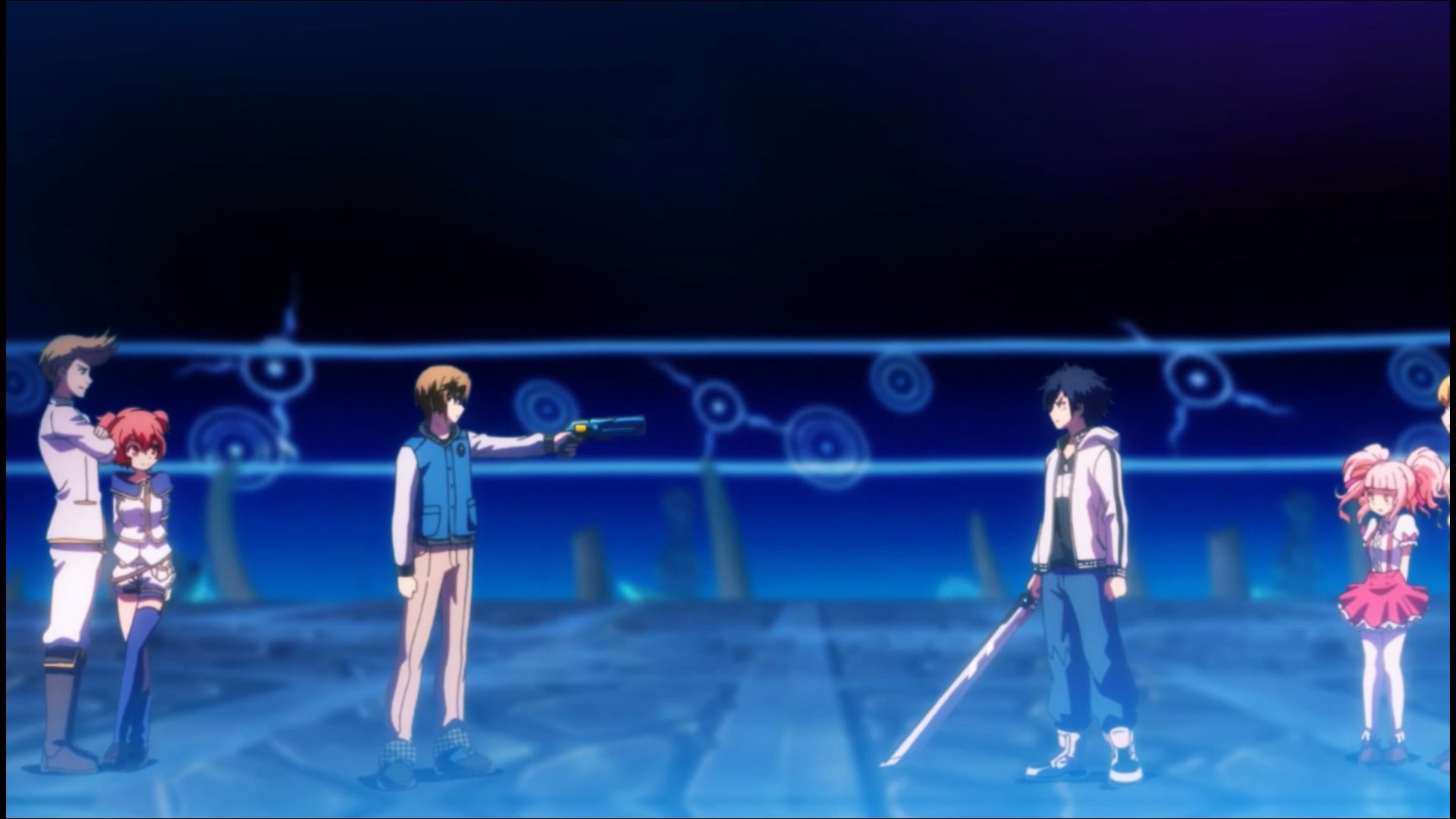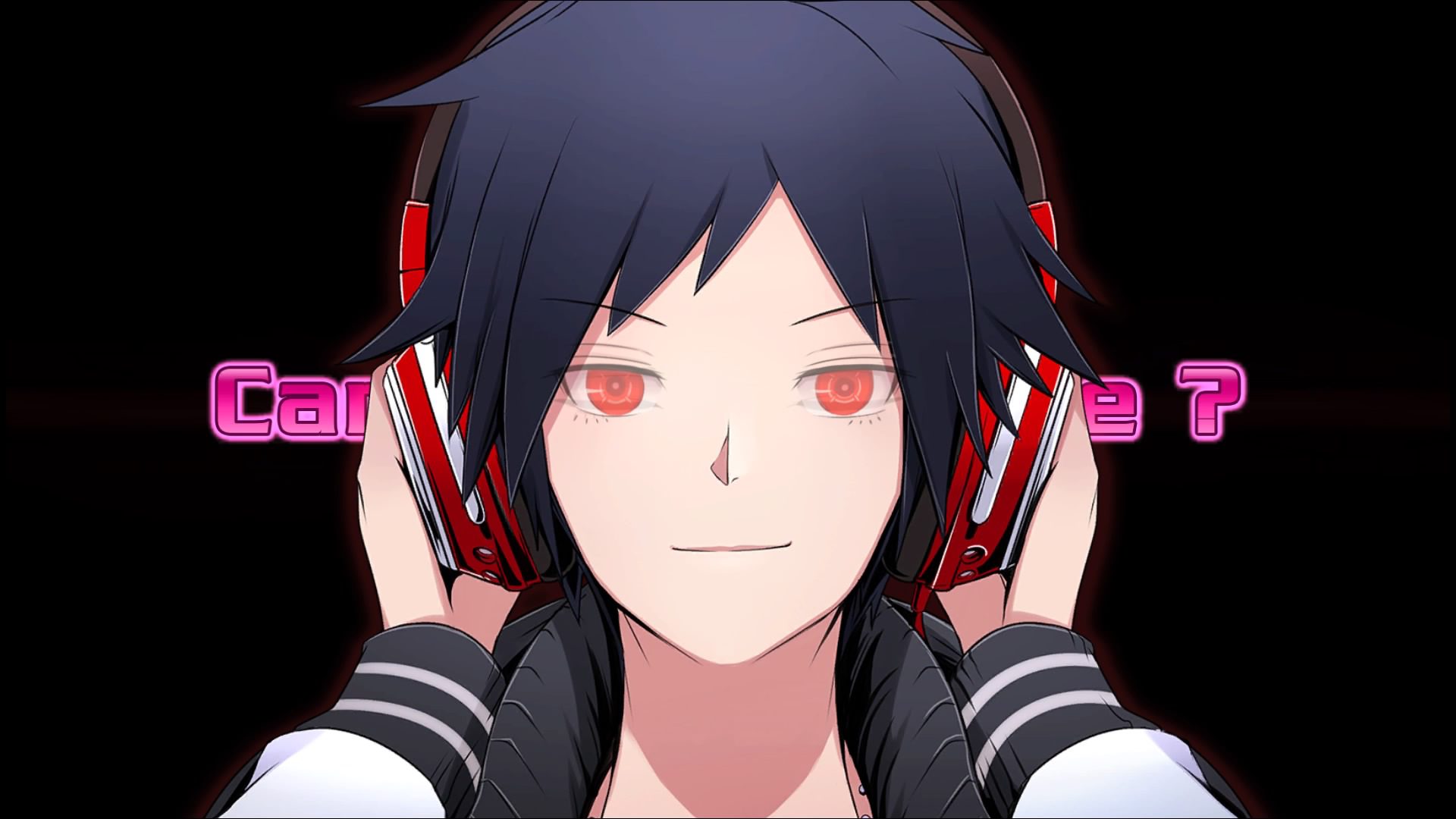Japanese culture has a lot of facets with each more intriguing than the last. Akihabara is often at the center of shifts of interest, especially in games, anime, comics, and other avenues of geek pursuits. It is a city that is constantly shifting to meet the whimsical needs of its people, with whole buildings being removed and rebuilt regularly. Advertisements change often as well, giving the city a new color scheme every now and again. Akiba’s Beat, a JRPG developed by Acquire, takes place on the streets of Akihabara, but there is a new danger at work. Delusions, powerful wishes that are being brought into reality, are causing all sorts of distortions and problems. Our heroes must prevent this.
Akiba’s Beat has the crisp anime designs we’ve come to expect from JRPGs, especially with games like Persona becoming more and more popular. Players take on the role of Asahi Tachibana, a reclusive neet (a person not in education, employment, or training) that’s been dragged into the crazy world of dispersing Delusionscapes alongside Saki Hoshino. Together, along with some friends met along the way, they battle against the monstrous Delusions that seek to keep Akiba in disarray.
Players will be experiencing two different styles of play in Akiba’s Beat, a narrative-driven visual novel and a battle system that focuses on racking up combos. Character art is big and well detailed, making each of them feel unique both in appearance and personality. These personalities are fleshed out through the often funny writing and the solid voice acting.
Battles take place inside the Delusionscapes, which are dungeons that are the physical representation of someone’s wishes. This can be a dark, chain-filled world in the case of a character who sees his life as a dark fantasy manga or the whimsical dreams of a girl who wants to be a popular idol, just to name a few examples. Each dungeon accurately reflects the nature of the person who inadvertently created it, making for some interesting dives. Unfortunately, the dungeons lack complexity in layout and usually result in dull wondering from fight to fight, but more on that later.
The combat system is similar to what’s been used in a lot in the Tales Of series. Players control any of their four characters, chaining basic attacks with special attacks. However, the amount of moves that can be performed is tied to their AP, meaning there has to be a slight delay in button inputs in order to succeed. Add in side stepping, free running in the circular arena, and commanding units to use items and powers makes for a pretty average combat system. Players can also activate Imagine Mode, which allows Asahi and his friends to attack freely, building strength if their attacks sync with the music track that pumps through their headsets.
The game’s environments outside of the Delusionscape are all based on the actual streets of Akihabara, down to the style of advertising. While the city feels authentic, the actual space given to explore is fairly small, with players really only able to pop into shops that are all just standard JRPG store menus. I would have loved to see the loading screens used less often as well, as the chunks that are actually available to explore feel so small and bite sized. Mostly this environment is only used to walk from one objective marker to the next, with little branches that point to occasional, but short, side stories that highlight a particular character.
It’s a shame that there wasn’t more focus put into actually exploring the city as there is obviously so much care put into making sure the culture is represented accurately. Throughout each chapter, there is a focus on one part of geek culture like maid cafes, music idols, and sound design. These segments and stories really try to make sure the player is aware of the fandom they’re discussing and some interesting thoughts are written into the dialogue. The characters frequently talk about anime and gaming like anyone living in Akihabara would, but not much is done with the story to make it appealing, leaving the audience to listen to empty conversations a bit too often.
Akiba’s Beat has the foundation for a cool standard JRPG. Yet, there is so much that the game just doesn’t do as well as I would’ve anticipated. For starters, the game’s plot is delivered incredibly slowly, even for JRPG standards. There was a stretch of three hours where I simply ran from one character to the next, listened to dialogue, and moved on to the next scene. This was especially bad in the idol segment, where I basically talked to the same three characters, then went to sleep, only to return the next day to do the same thing again with little progress being made. It was agonizing.
Now, this long stretch of time was probably most attributed to the fact that I let the dialogue play out vocally. Although, in later chapters I found that it was more effective to quick read and tap the ‘X’ button to keep things moving. This is a shame, cause I liked the delivery of the voice acting and just about every line in the game is spoken. It also doesn’t help that there aren’t any dialogue choices (at least not in the parts I played through), making it feel like watching a long anime with the added chore of walking down the street to watch the next episode.
Battles also blend into swaths of repeated phrases and awkward movements. I tried to find some way to keep the characters from talking so damn much in battle, only to find I would have to mute all voices across the board. It was almost comical just how noisy the party members are during battle. Hearing “Do your thang!” a thousand times in the span of a dungeon wasn’t pleasant in the slightest.
While most of the sound design hits empty chords, the music featured in Akiba’s Beat is awesome, mostly. Some battle themes, especially those equipped for Imagine Mode, are rocking melodies, feeling like they came straight out the opening of an anime. There are a lot of themes used over and over during conversations though and those tracks are often much shorter, so they have a tendency to loop a lot.
Most of my time spent playing, and I use that term lightly, Akiba’s Beat was used to walk to up to characters, set the controller down, listen to the conversation, and then immediately go to the next marker on my map. I’ve played a ton of JRPGs in my life, but few had me so bored out of my mind than Akiba’s Beat.
It’s a shame too, cause I genuinely enjoy the setup. Delusions bring out the deepest desires of the characters, leaving a physical impression on Akihabara, much like it probably does in the actual city. Each aspect of being a passionate fan is examined under multiple viewpoints by the cast. Characters have everlasting appeal in their design, at least visually. The time-loop that the city is trapped in, making them relive the same Sunday over and over, was an interesting backdrop to the psychological themes. There’s just so much that I like about the potential of Akiba’s Beat, that it saddens me that there isn’t more game to be had.
In summary, Akiba’s Beat is a slow-paced visual novel with chores for the player to do to see what happens next. I didn’t find the combat fulfilling, finding myself just absently going through the motions with little strategy involved. Bosses at least brought a bit of change to the combat, but they had the tendency to feel cheap, quickly becoming punching bags for Imagine Mode. The plot lines could have had less fluff and more depth; it just didn’t feel like there was much at stake. Only four or five chapters in did we start to get some sort of character development, as Asahi’s best friend shows up on the opposite side of their goals. By then though, I couldn’t bring myself to care about what little conflict was there.
With all of my criticisms in mind, I actually have a lot of love for this series. After starting Akiba’s Beat, I went into Akiba’s Trip the Animation during my downtime. That anime series was full of laughs and commentary about the passions of fans, with whole episodes devoted to each hobby. I haven’t laughed that hard at an anime in a long time and was pretty bummed when I finished the show. I’ve also been told that there was more humor in the Akiba’s Trip game, which I probably would’ve enjoyed more. I can see that the team at Acquire were going for something more serious, more traditional, but they lost all the magic that made their works interesting in the process.
Akiba’s Beat is definitely not for everyone and for most players it would be a boring affair. If anything, I recommend playing the Vita version instead; at the least it can be played in small bursts absentmindedly. I did play the game using remote play a few times and it was more tolerable.
At the end of the day though, I didn’t have much fun playing Akiba’s Beat, maybe a sequel or an anime adaptation will turn out better.
Akiba’s Beat is out now on PS4 and PSVita. For more information, check out the official listing on XSeed Games’ website. A digital game download was provided for review purposes.












